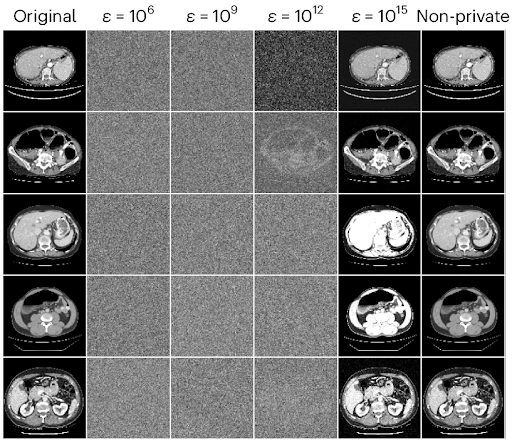In the past, healthcare used yearly reports to look at things that already happened, like hospital readmissions or emergency room visits, to decide how to treat patients. These ways helped, but they often worked only after the health problem got worse. This made treatment cost more and work less well.
AI-driven predictive analytics is a new way that uses a lot of data to guess what health risks might happen before they get serious. It looks at many types of information, not just medical records. It uses data like pharmacy records, dental health, a person’s living situation, wearable devices, and whether patients take their medicines.
AI uses computer programs to study all this data and predict health events. It can find which patients need care earlier. This helps medical managers and IT leaders make better decisions. They can see who is at high risk and plan care that fits each patient. This way of working fits well with value-based care, which wants to make health better while using money wisely.
Early Risk Identification: A Core Advantage
One big benefit of AI-driven predictive analytics is that it can spot risks early. For example, AI can handle over 250,000 medical codes and shrink them down to 250 key features using deep learning. This helps doctors find small health changes that might be missed in normal checkups.
Diseases like diabetes, cancer, heart problems, and brain disorders often show small warning signs early. AI can catch these signs so doctors can help before things get worse. AI also looks at social factors like where a patient lives, their income, and if they take their medicine well. This gives a full view of health risks.
Certilytics is a company that uses AI to mix medical, pharmacy, and dental data. This helps health leaders spot risks sooner. This is important because the U.S. has many older people who need more care.
Cost Optimization through Predictive Analytics
The U.S. spends over $3.3 trillion on healthcare each year. Much of this is for long-term diseases and avoidable hospital visits. Predictive analytics help reduce these costs.
- By finding high-risk patients early, doctors can plan care to prevent expensive hospital stays.
- AI predicts readmission risks for illnesses like heart disease and diabetes.
- This helps clinics use resources better and stop unnecessary tests and emergency visits.
AI also helps predict costs for running hospitals. It can tell when machines need fixing and helps plan staff schedules depending on patient needs. Companies like Veritis use AI to make emergency rooms work faster and reduce wait times. This saves money and improves care.
Also, AI looks at health programs and tools to see if they are worth the money spent. This supports leaders in making smart choices about wellness programs and treatments to get better health results.
AI Call Assistant Manages On-Call Schedules
SimboConnect replaces spreadsheets with drag-and-drop calendars and AI alerts.
Leveraging Diverse Data Sources for Holistic Care
AI’s strength in value-based care comes from combining many types of data. It brings together electronic health records (EHRs), wearable devices, genetics, social info, and behavior patterns.
Wearable devices give real-time data on heart rate, activity, and medicine use. With Remote Patient Monitoring (RPM), AI watches patients’ health outside the clinic. It helps doctors get continual updates.
For example, AI can find early signs of health problems by checking data from smartwatches or fitness trackers. This helps avoid hospital stays and keep chronic diseases under control.
HealthSnap links its RPM platform with over 80 EHR systems using common standards like SMART on FHIR. This smooth data sharing puts AI insights right in the hands of healthcare teams. Many U.S. medical places use several systems, so this is important.
AI Call Assistant Skips Data Entry
SimboConnect recieves images of insurance details on SMS, extracts them to auto-fills EHR fields.
Medication Adherence and AI
Many patients do not take medicines as prescribed. This causes health to get worse and costs to grow. AI tools try to fix this by studying how patients act and using chatbots to remind them.
In RPM, AI chatbots talk to patients in ways that fit their culture. They encourage patients to follow medicine schedules. AI also finds patients likely to skip medicines, so doctors can help sooner. This approach improves health and cuts down avoidable hospital visits.
Research shows AI helps keep patients engaged by watching medicine taking and sending alerts when needed. This supports care models that focus on preventing problems before they get worse.
AI-Enabled Workflow Automation in Healthcare Administration
Using AI, many hospital office tasks can be automated. Simbo AI offers phone answering and scheduling using AI. This lowers work for staff and lets them spend more time with patients.
- AI can schedule appointments, communicate with patients, manage referrals, and handle billing.
- This makes the office run better and cuts patient wait times.
- When AI finds high-risk patients, it makes sure follow-ups happen quickly.
AI also helps doctors by filling out notes and summaries automatically. For example, Abridge uses AI to cut doctors’ charting time by 74%. This gives more time to focus on patients and lowers stress.
AI also improves IT operations. It helps plan staff schedules, maintain equipment, and manage supplies. These changes save money and help provide good care.
Practical Considerations for U.S. Medical Practices
Hospitals and clinics must keep patient data safe when using AI. This means following laws like HIPAA and GDPR. Protecting privacy is very important to keep trust.
Another issue is connecting new AI systems with old IT setups. This might need upgrades or special software. Staff also need training to use AI confidently.
Working with AI vendors who understand healthcare needs helps a lot. Companies like Sisense and Veritis provide support to make AI work smoothly. Starting small with projects on big problems, like managing chronic disease or emergency care, helps show results and improve before wider use.
HIPAA-Compliant Voice AI Agents
SimboConnect AI Phone Agent encrypts every call end-to-end – zero compliance worries.
Future Trends in AI Predictive Analytics for Value-Based Care in the U.S.
In the future, AI predictive analytics will get better at understanding many types of data in real time. It will work more with telemedicine to monitor patients outside the clinic. AI virtual assistants will provide help any time of day.
The global market for predictive analytics in healthcare may reach over $154 billion by 2034. This shows it will be a big part of changing healthcare in the U.S. It will improve health results, make operations run smoother, and save costs.
Medical administrators and IT teams should keep investing in AI systems that are easy to use, safe, and follow health laws. These systems that share data well will help hospitals meet the growing needs of value-based care.
The Bottom Line
AI-driven predictive analytics, combined with workflow automation and data integration, gives U.S. healthcare providers tools to improve patient care early and manage costs better. As healthcare becomes more complex, using these technologies will be key to offering efficient, patient-focused care that aims for good results.
Frequently Asked Questions
How is AI transforming value-based care in healthcare?
AI enables a shift from retrospective to predictive analytics, allowing healthcare leaders to identify risks early, optimize interventions, and lower costs. It integrates diverse data sources, providing a holistic view of patient health and social determinants, thereby improving health outcomes and program efficacy in value-based care models.
What challenges in healthcare have accelerated the adoption of AI-driven strategies?
An aging population, rising chronic diseases, escalating costs, and an explosion of diverse healthcare data have pressured the industry. These challenges necessitate innovative AI methodologies for early risk detection, personalized interventions, and improved clinical and financial outcomes.
How does AI-driven risk stratification differ from traditional risk assessment?
Unlike traditional retrospective methods focused on past events like emergency visits, AI-driven risk stratification uses comprehensive data integration and predictive analytics to identify future risks and disease prevalence early, enabling proactive care management and cost avoidance.
What kind of data is integrated for AI predictive analytics in healthcare?
AI platforms unify extensive data sources including medical records, pharmacy data, dental information, unstructured text, wearable device outputs, and social determinants of health, creating a 360-degree view of patient health beyond clinical history alone.
How does AI enhance proactive and targeted outreach in medication adherence programs?
AI analyzes vast healthcare data to uncover hidden intervention opportunities, prioritizing resources on high-impact conditions. It identifies patient populations with adherence challenges, allowing tailored outreach that maximizes engagement and clinical outcomes while minimizing unnecessary interventions.
What role do healthcare AI agents play in improving medication adherence?
AI agents can monitor adherence patterns, predict risk of non-compliance, and facilitate personalized communication and reminders to patients. This targeted engagement supports behavioral change, reduces complications, and improves overall health outcomes by ensuring treatments are followed correctly.
How do AI platforms measure the success and ROI of healthcare adherence programs?
Advanced AI evaluates program impact by isolating variables across complex datasets, providing precise analytics on intervention effectiveness. This enables leaders to quantify cost savings, health improvements, and operational efficiencies, thereby validating program investments and guiding resource allocation.
Why is the shift from reactive to anticipatory care significant for medication adherence?
Proactive AI-driven care management identifies potential adherence risks before complications arise, allowing timely intervention. This anticipatory approach prevents costly acute events, improves patient health trajectories, and aligns with value-based care that rewards preventive measures.
What technical capabilities support AI’s success in medication adherence outreach?
Deep learning and generative AI condense large volumes of medical codes into actionable features. These capabilities enable sophisticated pattern recognition, precise risk prediction, and tailored patient engagement strategies essential for effective adherence programs.
How can healthcare organizations partner with AI experts to improve medication adherence outreach?
Organizations should collaborate with data scientists and AI specialists to integrate comprehensive datasets, develop predictive models, and implement scalable AI platforms. These partnerships facilitate transforming raw data into insights that drive targeted adherence initiatives and sustainable healthcare improvements.
The post How AI-Driven Predictive Analytics are Revolutionizing Value-Based Care by Enabling Early Risk Identification and Cost Optimization in Healthcare first appeared on Simbo AI – Blogs.











